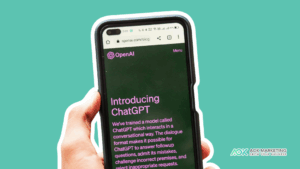
Optimize Your Site By Focusing On Keywords
Page Title
Another name for the page title is a title tag or title element. Optimizing the page title by incorporating keywords is an extremely important factor when it comes to on page optimisation. By mentioning your targeted keyword(s) in the coding of the title, it ensures that your web page, if relevant to the searcher’s query, will be recognized by the search engines and will appear on the search engine result page (SERP).
Start Title With Keywords
A separate and unique title for each of your blog posts or articles is also a very critical factor to ensure on page search engine optimization (SEO). It is for the best if you place your targeted keyword at the beginning of the title tag or at least closer to the start of the title tag.
Meta Descriptions
Since meta descriptions are no longer considered as a ranking algorithm by search engines like Google, site owners tend to ignore them. However, even though they may not play a part in ranking your web page, users find them extremely useful when it appears on the SERP as they provide a concise description of what your article is about and also the keywords that are included in the description and are relevant to the searcher’s query are highlighted. Make sure that your meta description isn’t more than 160 characters, including spaces.
Increase Subject In URL
To optimize your page you need to focus on developing search engine friendly URLs. A URL is basically the web address of your page. There are two things that you can do to ensure that the URLs for each of your page are optimized.
- Keep them short. This is because URLs that are short are seen to be better able to rank higher on search engine results.
- Include targeted keywords as it brings better crawling and consequently increases the chance of your web page appearing on the SERP.
Here’s how you should locate your keywords in the URL.
Breakdown the Content and Tag
Another thing to consider when aiming to achieve on-page optimization is that you break your content into multiple paragraphs and smaller sections. For instance you could break your content under different headings where you use the following tags, H1 (this is mostly the title of the page), H2, H3 etc and tweak keywords in them.
How is this supposed to improve your on-page optimization, you ask? Simple, by breaking your content in smaller headings and subheadings, you can use your keywords a number of times to increase relevance by making your headings keyword rich rather than using the generic headlines.
Further, you could put emphasis on your keywords by highlighting them through italics or using bold font. Just not overdo them – highlight only one or two keywords that are important.
Benefit From Internal Linking and Anchor Texts
Internal links also known as inbound links are quite useful to further your on-page optimization. Not only are they user-friendly – as such linking eases navigation for the visitors – but it also is a brilliant way to gain trust of search engines by increasing authority. Just make sure that you integrate the links in the content naturally. For instance, you should use keyword rich anchor texts as a link to another of your blog posts. Not only will this ensure higher page ranking on the SERP, but it will also bring more traffic to your web pages.
Optimize the Images With Keywords
Images are an important part of your content. Thus, it shouldn’t come as a surprise to you when I say that as part of your on-page optimization strategy, you should optimize your images with respect to your targeted keywords. This is because it brings considerable traffic to your page through image search.
Image optimisation with respect to keywords is a very simple and effortless task. By simply changing the name of your image from its generic name (eg. DCMIMG5.jpg to title-of-topic.jppg) you can ensure better ranking and traffic.
Make the Most of Your Images
Image optimization is more than just integrating keywords in the description. There are a lot of things that you need to take into account when optimizing your page.
- Add a short description to your images. Use words that are most likely to be used by users when doing search.
- Use alt tags that act as a text alternative for images when the browser doesn’t support or load images in time. Also, alt tags are good for SEO as by using keywords in alt texts you are able to associate your images with keywords.
- Make sure that the file size of your image is not very large. This is because it will slow down the speed of your site and will eventually result into lower ranking of your page on the SERP. According to a study, most individuals will only wait for 3 seconds for a site to load before they exit it. An ideal size for your image is 70kbs or below, of course unless the image really has to be huge (quality requirements etc.).
Increase the Speed of Your Site
Many search engines including the most popular one, Google, have stated that they put a high value on the loading speed of a site before determining its ranking on the SERP. Also, the speed of your site is crucial to user experience. Thus, it is only logical that you focus on improving and boosting the site speed. Here are a few things that can hinder or slow down the speed of your site.
- Lots of images which have a larger file size and are not compressed.
- Embedded videos and other related media.
- Heavy and complex coding.
In order to ensure that your website’s speed isn’t affected by any of the above mentioned factors, it is recommended that you hire experts to look into this problem. Your page should be loaded within 3 seconds maximum.
Ensure That Your Web Page Is Mobile Friendly
On-page optimization also entails that your site be mobile friendly. While many site owners have adopted the mobile version of the site to cater to the mobile users, and most of them still haven’t modified their sites. To have a mobile friendly website is immensely important today as search engines prefer sites that are mobile friendly. Also, a lot of users use different mobile devices to browse the webs so the need is definitely there.
Modifying your web design to a responsive design is the new practice today that allows sites to adapt to the layout and the screen size of numerous devices including tablets, laptops and even mobiles. Thus, responsive web design promises better user-experience and high ranking without you having to incur extra cost in terms of managing two versions of your site.
What to Focus On
An Efficient Mix of Short and Long Tail Keywords
While short-tail keywords also known as head terms are not more than 2 words, long-tail keywords can include between 3 to 5 words. It is paramount to have a blend of both types of keywords as each of them offers separate benefits. Short term keywords are more general which allows your content to be displayed to a wider audience while long-tail keywords – even though less popular – are more specific and better targeted to the searcher’s query.
Catchy Content Titles
Another thing that you as a site owner or blogger need to focus on is to have a catchy content title to ensnare and captivate the attention of your audience. While it is important that you include your targeted keywords in the title, you should be very smart in doing so. This is because the keywords in the title needs to be catchy and remain relevant to the content.
Concentrate on Developing and Building Quality Links
For your on-page optimization to be successful, you need to concentrate on strategies that lead to the growth of quality links. To build quality links and ensure that you rank on the organic search, you should only promote links that hold high authority.
Make Sure that the Quality of Your Content Isn’t Compromised
Content is the King. No matter what on page optimization tips and strategies you implement, if the content quality is not up to the par – it is worthless and an absolute waste of time and energy. Thus, whatever strategies you implement, make sure that the quality of your content is under no circumstance compromised. Here are a few ways on how you could maintain the content quality.
- Proofread your content in case of potential spelling or grammatical errors.
- Originality is the key to success. Once you are done writing the content, check for plagiarism as search engines and even audience doesn’t take plagiarism lightly. In fact, even if there is a hint of plagiarism, you are likely to lose your position on the SERP.
- Don’t overstuff your content with keywords just for the sake of better ranking. In fact, your keyword density should not exceed 1.25%.
- Length is strength. Not only longer content brings better ranking (opportunity to mention more keywords) and thereby more traffic to your page, it is also useful to increase the ‘dwell’ time. Dwell time is basically a measure to determine how long a user stays on your page. By having long and engaging content, the dwell time will increase. As per most experts 700 to 1000 words is the ideal length for your content.
- Visual media has taken prevalence today. Blocks of plain texts no longer have the ability to hold the attention of the audience. Thus, you should back your content with a range of multimedia like videos, slides, images and infographics.
- It is also recommended that you outsource your content writing to an expert (we’d be more than glad to handle it for you) so that you can rest assured.
The above mentioned tips are only some of the ways to achieve on-page optimization. However, if you follow them to a T, they are more than enough to guarantee an optimized web page. Just make sure that you implement the above strategies jointly and not independently for them to be successful. And in case you need help, please feel free to get in touch with us.
About The Author
Khalid Essam
Khalid is the Chief of Staff at AOK. He collaborates with a team of specialists to develop and implement successful digital campaigns, ensuring strategic alignment and optimal results. With strong leadership skills and a passion for innovation, Khalid drives AOK’s success by staying ahead of industry trends and fostering strong client and team relationships.






